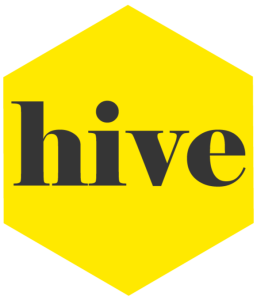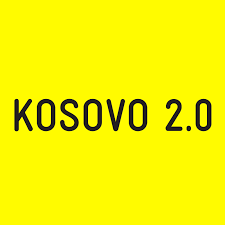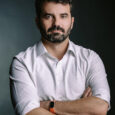The debate about the education of politicians’ children erupted again in the public sphere after an incident involving President Vjosa Osmani in early September. On September 10, a cameraman for the Paparaci media outlet was arrested while filming a report about the private education of Osmani’s children. According to the Kosovo Journalists Association, he was stopped by her close protection, his camera was confiscated and he was asked to delete the material.
Condemning the “continuous harassment” of her children by journalists, Osmani justified transferring her daughters from a public to a private school by citing security concerns and a change of residence. However, in pointing out the problems her children experienced at the Ismail Qemali school in Prishtina, she exposed the painful reality of public schools where most of the country’s children study: blocked and unclean bathrooms, lack of water and heating, absence of security, and even cases of students being caught with weapons or using narcotic substances. Osmani also mentioned the overcrowding of classrooms, where 40 students are crammed into a single class out of 4,000.
According to media reports, the cost of a school year at the private institution where the President transferred her children is approximately 7,000 euros. As Osmani explained in her justification to journalists, it is expensive, but she has the financial means to afford it.
I am among the parents who send my seven-year-old daughter to a private school. Unlike the President, this is not easy for me at all, considering I have rent and loans to pay. But I believe that, above all, it is important for children to spend their early years in a safe environment. What I value most in private schools — more than the educational program — is a healthy environment, where children are not traumatized by dirty bathrooms, where basic hygiene standards are respected, where they are not bullied and where their physical safety is not at risk.
However, these opportunities are not available to the 245,000 other children who began the school year this September under the same conditions. Their parents do not have the financial means to send them to private schools, and in most municipalities, there is no private school system at all. With this public education system, are we not condemning children from the very start?
How are most children really being educated?
The debate over private versus public education — sparked by the poor conditions at the Ismail Qemali school in the capital and reinforced by campaign videos from mayoral candidates about the state of public schools — highlights a painful truth: schools, which should be places of learning, growth and safety, have too often become sources of trauma for children.
At Ismail Qemali, the start of this school year was marked by boycotts and protests from parents after classrooms on the very first day were flooded with sewage water.
Meanwhile, during the municipal election campaign in Deçan, the Social Democratic Party (PSD) candidate for mayor, Natyra Kuçi, documented conditions at the Sylejman Vokshi school in the village of Prilep, where students are forced to use an improvised outdoor toilet. At the Lidhja e Prizrenit school in the same municipality, her video revealed classrooms in deplorable conditions: cracked walls, broken floors and no access to running water.
The issue of hygiene in public schools is a chronic problem. Children are forced to use unclean toilets every day, with no basic conditions for washing their hands and no access to drinking water. A decade ago, health experts raised the “alarm on an outbreak of infectious diseases” due to the extremely low level of hygiene, yet the institutions that are responsible for this have remained silent to this day.
The daughter of the outgoing Prime Minister, Albin Kurti, is also being educated abroad. Meanwhile, for ordinary citizens, it has become normal to send their children into environments that would be deemed unacceptable in any other European country.
In addition to poor physical conditions, the curriculum itself is deeply problematic. Many textbooks, written decades ago, contain racist language toward minority communities and marginalized groups, while also promoting rigid gender roles. Instead of teaching children tolerance and critical thinking, they perpetuate prejudice.
Another major concern for students in Kosovo is the weight of their school bags, which often exceeds the recommended limit of 10% of their body weight. This results in back pain, spinal deformities, fatigue and difficulty concentrating. In some cases, younger students are forced to carry loads of four to five kilograms on their shoulders every day, often walking long distances to and from school. This poses a serious risk to their long-term health. Yet, promises of solutions — such as equipping schools with personal lockers, digitizing textbooks, improving curricula and implementing a better school schedule — have consistently remained unfulfilled.
Teachers, meanwhile, have been left without support instead of being the main pillar of reform. According to official data from 2023, only 25% of them attended professional training. Most possess only minimal digital skills, at a time when students are far more adept at using technology. A strategy to assess teachers’ digital competencies was promised as early as 2023, but has yet to be implemented. This means children are being guided into a new world by people who do not understand it.
Beyond learning, school should also be a place of socialization and safety. Yet in Kosovo’s schools, violence and bullying have become widespread problems. Students are frequently subjected to insults, harassment, physical aggression and even beatings. Bullying has become normalized. Just last month, the case of a girl in Gjilan who was raped by her peers was widely reported in the media. Despite this, the school took no action, while the victim was forced to remain in the same class as her rapists. What message does this send? That violence is tolerated, and victims are left defenseless.
Many of these incidents are not properly reported or documented by institutions, leaving victims vulnerable and fearful. The lack of effective mechanisms within schools, combined with weak institutional responses, further aggravates the situation, undermining both students’ sense of security and the learning process.
In addition to outdated curricula and the widespread presence of these negative examples, schools in Kosovo — especially in rural areas — also face challenges in adapting to the declining number of students caused by emigration and falling birth rates. An internal report by the Ministry of Education in 2022 revealed that 72.7% of classes do not meet the legal minimum student enrollment criteria. Out of 190 schools analyzed, 62 should have been closed. And yet, they remain open for this school year.
This means we have classes where three or four students of different ages are taught together by a single teacher, who must divide attention across multiple grade levels. Such a model provides neither proper learning conditions nor opportunities for socialization. Children grow up without peers, without healthy competition. And for what? To preserve the administrative status quo and avoid backlash from local residents over school closures.
Even private schools, however, do not guarantee a better quality of education. From pre-school to upper secondary level, 22,124 students attend private schools across the nine municipalities where such institutions exist. The textbooks are the same, the teachers graduate from the same universities and the pedagogical quality is no different. The only distinctions are in discipline and infrastructure. Yet poor levels of teaching and learning persist. As a result, even children whose parents pay thousands of euros per year for their education remain victims of an outdated system.
International reports and assessments confirm the seriousness of the situation in Kosovo’s education sector. Since 2015, in all three rounds of the Program for International Student Assessment (PISA), Kosovo has consistently ranked among the bottom three countries in reading, mathematics and science. These are not merely statistics, but a stark reflection of a generation completing its education without acquiring the basic skills needed to navigate an increasingly competitive job market.
Kosovo’s public education system is a legacy of a time when the teacher was the only source of knowledge. Our parents walked miles to attend classes with a teacher who taught them things they could not learn anywhere else. But today, a child carries more information in their pocket than the entire library of Alexandria that was burned down. It is now possible for a 12-year-old to know more about English or technology than their teacher. And no one can predict what skills the job market will demand in 10 years.
So, is it worth waking children at seven in the morning, loading them with heavy backpacks, and sending them into cold, unheated, non-digitalized classrooms, where they learn from books that promote discrimination, where they are bullied and where many leave traumatized?
While developed countries debate how to integrate Artificial Intelligence (AI) into education, we remain hostage to a system that still operates with chalk and blackboards. If we do not dare to change, then the answer to the original question becomes clear: yes, we are harming children by sending them to these schools.
The solution is not simple. It is clear, however, that superficial changes are insufficient. What is needed is a radical reform: safe, hygienic schools equipped with modern technology; teachers engaged in continuous professional development; and curricula that foster critical thinking and tolerance.
Feature image: Majlinda Hoxha / K2.0
 Want to support our journalism? Become a member of HIVE or consider making a donation. Learn more here.
Want to support our journalism? Become a member of HIVE or consider making a donation. Learn more here.

